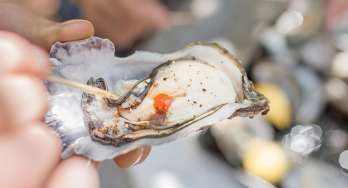When is Winter in Australia?
Winter in Australia runs from June through August, which is the opposite of the northern hemisphere. This season offers a refreshing change, with cooler temperatures and a completely different feel to the hot summer months. For local travellers, it's a chance to escape the heat of the north or head inland for crisp desert nights and stargazing. For international visitors, it's a unique opportunity to explore the country with fewer crowds and a more relaxed atmosphere.
This time of year is often overlooked, but it's one of the best seasons to road trip, camp, hike, or simply explore without the hustle and bustle of peak tourist season. Plus, many regions enjoy spectacular sunny days even in winter.
What are winter temperatures like?
Australia’s winter weather varies hugely depending on where you are:
-
Northern regions (e.g. Darwin, Cairns, Broome): Warm, dry and sunny. Daytime temperatures average 25–30 °C with low humidity.
-
Central Australia (e.g. Alice Springs, Uluru): Cool days (around 20 °C) and very cold nights, often dipping below 5 °C.
-
Southern regions (e.g. Melbourne, Hobart, Adelaide): Cooler days ranging from 10–16 °C, often sunny but with occasional rain.
-
Alpine areas (e.g. Snowy Mountains, Victorian Alps): Cold with snowfall, perfect for skiing and snowboarding.
No matter where you travel, layers are key. Mornings and evenings are often chilly, even in the tropics.
Why visit Australia in winter?
Fewer crowds, more breathing room
Australians have their main holiday season in the summer months over the Christmas and New Year season and tend to head to the coast or flock to popular destinations. Planning your trip in Australia’s winter means you’ll be able to avoid the crowds at popular attractions and camp site options will be plentiful. Because Australian tourists tend to be summer-centric, many places are noticeably less crowded in winter.

Comfortable temperatures
Winter is a very comfortable time to travel in Australia. Heading into the outback or up to the northern states is popular during winter as these hot spots can get unbearably hot during the dry summer months. In the north the winter is also “the dry season” and you don’t get as much humidity or rain as in the summer months of “the wet”. On the northern Queensland coast, temperatures are such that it’s business as usual but with less extreme heat and cooler nights.
Snowboarding and skiing
For winter sports enthusiasts, Australia’s snow season is short but spectacular. The Snowy Mountains in New South Wales and the Victorian Alps come alive with snow, offering great conditions for skiing and snowboarding and snow play.
Wildlife and nature at their best
For nature lovers, winter is an excellent time to visit. In places like the Northern Territory and Western Australia, cooler weather means it’s easier to explore national parks and hiking trails. It’s also whale-watching season along the east and west coasts, with humpbacks migrating along the shores. In many parts of the country, winter also brings clear skies, perfect for stargazing.
What to expect on the road
If you're planning a winter road trip, you're in for some scenic drives and crisp, peaceful campsites. There’s plenty to enjoy beyond the wheel too. From forest walks and wildlife encounters to fireside wine tastings and alpine adventures, winter opens up a different kind of road trip experience.
Need ideas? Check out our favourite Winter Road Trip Activities for ways to make the most of your time outdoors and in the van.
Safety and driving
-
Watch for black ice in alpine areas
-
Always check road and weather conditions before setting off
Whether you’re planning a short break or a long-haul trip, here are a few things to keep in mind for road travel during the colder months in Australia:
-
Shorter daylight hours: We recommend driving only during daylight hours and avoiding dawn or dusk when wildlife may be more active and crossing the road.
-
Cold mornings: Especially inland and in the south. Pack a good thermos for early starts!
-
Regional conditions vary: In the north, unsealed roads can be dry, dusty and remote. Always check conditions before setting off.
For more practical info, check out our What to Pack for Winter Road Trips guide.

What to wear in Australian winter
Here’s a quick guide to what you’ll need to pack depending on where you’re heading:
-
Northern regions: Light layers, hat, sunscreen (even in winter!)
-
Southern cities & coastlines: Warm jumper, rain jacket, closed shoes
-
Alpine areas: Thermals, waterproof outerwear, gloves, snow boots
Layers are your best friend. Australia’s winter can shift from sun to frost in a single day!
Looking for winter travel ideas?
Not sure where to head? We've put together recommendations for all styles of Australian winter escapes. Whether you're craving remote beach adventures, outback road trips, or tropical dry season getaways, we’ve got you covered.
If you’re dreaming of where to park your camper this winter, dive into our guide to the Top Spots for a Winter Campervan Holiday , with picks across coastal, inland, and alpine regions.
Heading north? There’s no better time to visit the NT than during the dry season. Read more in our Winter Motorhome Holiday in the Northern Territory article.
Or if you’ve got Western Australia on your bucket list, don’t miss our Ten Winter Road Trips to Take in Western Australia for wide-open roads, coral coast magic, and stunning landscapes.
Have a Winter Holiday Adventure with Maui
Enjoy planning your own winter getaway, Get there on your own terms when you hire a Maui campervan. Check out some of our favourite Aussie destinations and popular routes, and book your campervan today.



